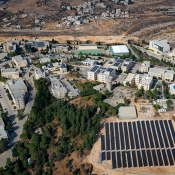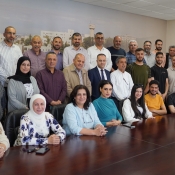September 1996 Web Memorial Project announced
On 25 September 1996, as protests swept across the West Bank and Gaza Strip in response to Israel’s provocative opening of a tunnel in the Old City of Jerusalem, the international media began to report a series of 60 Palestinian deaths. In addition, the later death of at least a further 15 people from serious injuries sustained at the time were largely ignored.
The concept of “martyrs” is not part of everyday life in the West. Arabic-language reporting and communication of what a martyr is to the international media has not traditionally been aimed at a Western audience. The focus of stories usually falls on the last day of the martyr’s life, often reported as a supernatural event in which the martyr “knew they were going to die”, with accompanying ‘proof’ of this recounted in great detail.
As a result of all of these issues, the stories of the actual individuals who were killed during the protests have been lost. To commemorate the first anniversary of the September 1996 clashes, a group of around 50 Palestinians and internationals from the Gaza Strip and West Bank including East Jerusalem, will be launching a memorial website for the around 85 Palestinian victims. The project is not affiliated with any political organisation.
The idea to make this website came out of a dissatisfaction with traditional ways of memorialising Palestinians who were killed while demonstrating against the Israeli military occupation. In general, these "martyrs" either become tools of the political faction they were associated with, however loosely, or a focus of religious aspirations. The fact that someone once amongst us is no longer here - that this person affected many other lives, had their own work, friends, and often supported a family - has been lost.
The main impetus for this project was 'Ala Jaradat (pictured right), a witness of many of the shootings in Ramallah during the September clashes. 'Ala was arrested while walking along a road with two friends and imprisoned for four months in the later days of the clashes, for "throwing stones at settlers", despite not being in any area where settlers were present. During his time in prison, those who had only heard about the events on television were constantly asking him to describe them. In his words, when he was released in January, "For me, the clashes never stopped." Sometimes it takes unusual circumstances to produce unusual projects.
It is hoped that the attention this website will bring to the martyrs will make people consider the dangers of seeing developments in the region as mere statistics. It is hoped that the attention that this website will bring to the families and friends of the martyrs will result help coming to the poorest, both on an offical level where recognition has not yet been awarded to the families and on an unofficial level, through the donations sought on the page.
The team includes a number of staff, students and graduates from Birzeit University, several of whom were involved in the creation of the On the ground in Ramallah – Reports from a town become battlefield website at http://www.birzeit.edu/palnews/war/, the first use of the Web by a local community to offer daily reports and images from the middle of a conflict situation.
The memorial website – to be made available internationally via the Birzeit University webserver at http://www.birzeit.edu/martyrs/september96/ - will contain stories and photographs from the lives of the 85 killed during the clashes, a look at the concept and treatment of martyrs in Palestinian society, and a fundraising section to help the families and relatives in difficult circumstances. The website will be launched at 4:25pm on Thursday 25 September 1997, the time a year exactly after the first person was shot in Ramallah.
The website will be initially available in English, with an Arabic version to follow. It is also hoped that the material will be published as a commemorative booklet in English and Arabic. Funding for this part of the project is invited.






